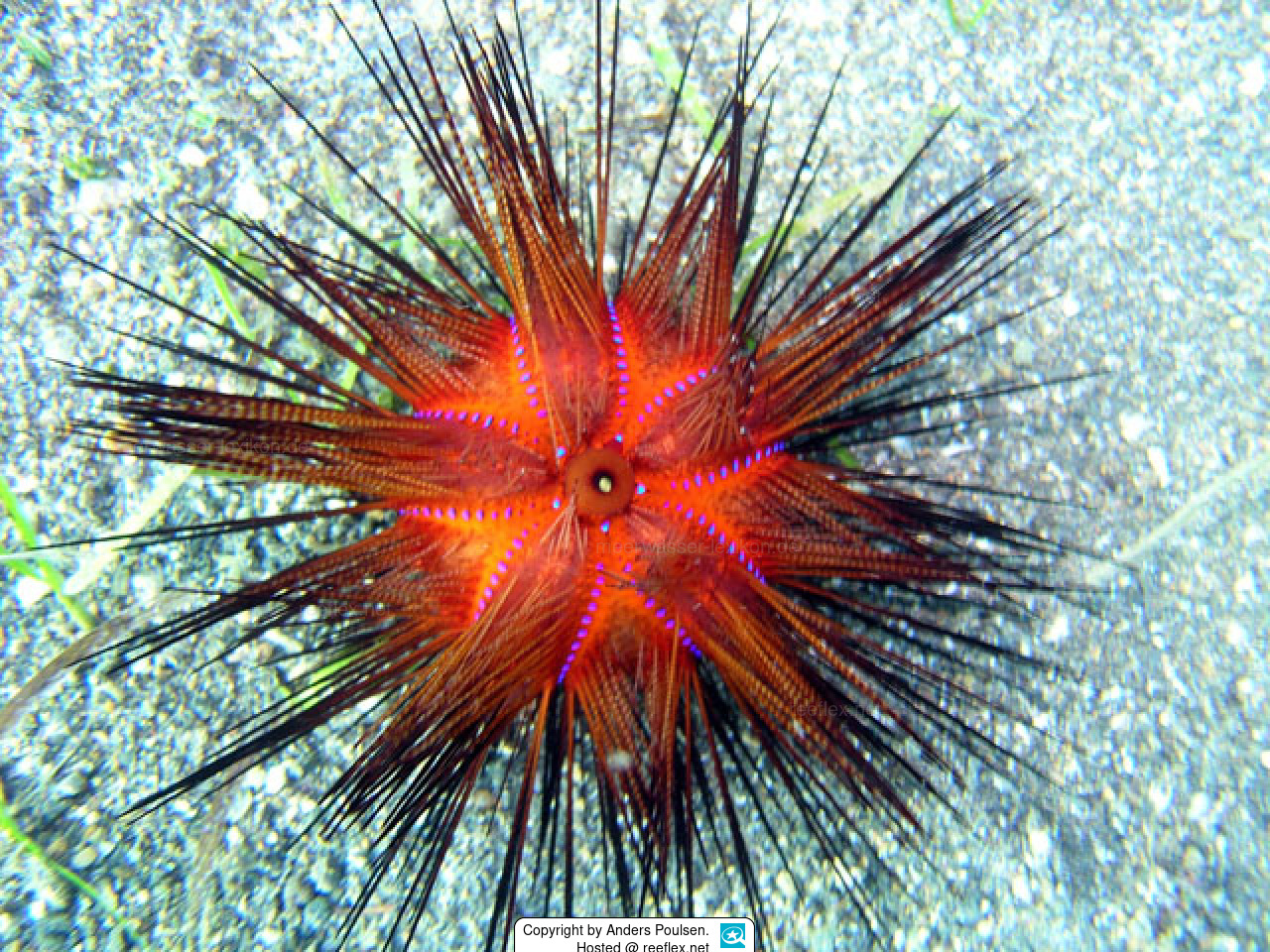Info
Astropyga radiata (Leske, 1778)
Astropyga radiata, Blue-spotted sea urchin, requires a large tank, preferably with heavy algae growth. Accepts most replacement food and seems to be persistent. However, needs living stones with algae growth for the first time. Feeds, like almost all sea urchins, on algae, but also eats calcareous algae.
Moves very quickly in the aquarium for a sea urchin. If there is not enough food in the aquarium, it must be fed, otherwise attacks are to be expected.
Socialisation - attacks
The sea urchin is not averse to meat and, if the opportunity arises, it will also overpower starfish or is not averse to carnivorous food.
There have been many reports of attacks on soft corals, crustose anemones, stony corals and gorgonians.
Confusion
There is a similar-looking sea urchin in the Caribbean called Astropyga magnifica.
Synonyms:
Asteropyga radiata
Astropyga elastica Bell, 1876
Astropyga freudenbergi Sarasin, 1887
Astropyga major (Seba, 1734)
Astropyga mossambica Peters, 1853
Cidaris radiata Leske, 1778
Cidarites radiata (Leske, 1778)
Diadema radiatum (Leske, 1778)
Echinus radiatus (Leske, 1778)
Echionanthus major Seba, 1734
Astropyga radiata, Blue-spotted sea urchin, requires a large tank, preferably with heavy algae growth. Accepts most replacement food and seems to be persistent. However, needs living stones with algae growth for the first time. Feeds, like almost all sea urchins, on algae, but also eats calcareous algae.
Moves very quickly in the aquarium for a sea urchin. If there is not enough food in the aquarium, it must be fed, otherwise attacks are to be expected.
Socialisation - attacks
The sea urchin is not averse to meat and, if the opportunity arises, it will also overpower starfish or is not averse to carnivorous food.
There have been many reports of attacks on soft corals, crustose anemones, stony corals and gorgonians.
Confusion
There is a similar-looking sea urchin in the Caribbean called Astropyga magnifica.
Synonyms:
Asteropyga radiata
Astropyga elastica Bell, 1876
Astropyga freudenbergi Sarasin, 1887
Astropyga major (Seba, 1734)
Astropyga mossambica Peters, 1853
Cidaris radiata Leske, 1778
Cidarites radiata (Leske, 1778)
Diadema radiatum (Leske, 1778)
Echinus radiatus (Leske, 1778)
Echionanthus major Seba, 1734







 Anders Poulsen, Dänemark
Anders Poulsen, Dänemark













